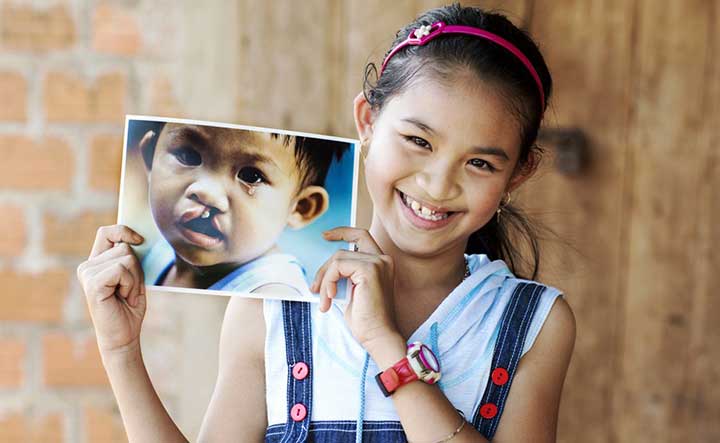During my three decades as a nurse, volunteering on a medical mission has always been on my “to do” list. In 2005, having finished my nursing education and with an empty nest at home, I finally had the time and wherewithal to commit to such a mission. After exploring various options, I decided to apply to become an Operation Smile volunteer.
A children’s medical charity that launched in 1982, Operation Smile provides free surgery for children and young adults with deformities—primarily cleft lip and cleft palate. Worldwide, thousands of healthcare volunteers have treated more than 115,000 children and young adults in more than 2 dozen countries.
In November 2007, after being credentialed by Operation Smile, I traveled to Qena, Egypt on my first mission.
I was met at the Cairo airport along with several other volunteers; from there, we traveled together by plane and then by van to our hotel, which was more like a dormitory with twin cots and community bathrooms. My roommate was an operating room (OR) nurse from Nova Scotia—also a first-time volunteer. It was fun to have another rookie around to share my fear and excitement.
The 53-member Team Egypt included nurses, plastic surgeons, anesthesiologists, a pediatrician, a pediatric intensivist, a dentist, a speech pathologist, a child-life specialist, patient-imaging technicians, medical records personnel, a photographer, high school students from Paraguay, and local nurses and physicians. For the first 2 days, we screened 322 people who came to be evaluated for possible surgery. They ranged from 5-day-old infants to middle-aged adults.
From screening to surgery and recovery
For each person, we began the screening by creating a medical record; then each person posed for four photographs. Sometimes I assisted with these photos; I enjoyed this because it gave me plenty of personal contact with the prospective patients and their families.
After vital signs and height and weight were obtained, each person saw a plastic surgeon, an anesthesiologist, a pediatrician, a dentist, and a speech pathologist. During waits between these stations, the child-life specialist and students circulated to interact with the people being evaluated.
At day’s end, team leaders met to decide which people were surgical candidates and to assign a priority level to each. Those with cleft lips got the highest priority, followed by those with cleft palates, then revisions of lips and palates. Per Operation Smile criteria, team leaders excluded infants younger than 6 months old, persons who were too ill, and those whose deformities were beyond the mission’s scope.
Those accepted for surgery underwent preadmission hemoglobin and hematocrit testing. Patients with hemoglobin values below 9 mg/dL were rescreened to determine their continued eligibility.
After 2 days of screening and 1 day of setup, the surgeries began. We had no transporters, so the anesthesiologist or plastic surgeon carried or walked the patient into the OR. Surgery took approximately 1 hour for cleft lip repair and 2 hours for cleft palate repair.
As I cared for my first postoperative patient, my nervousness disappeared. My recovery-room colleagues and the pediatric intensivist were wonderful to work with. By the end of the first morning, I felt as if we’d been working together as a team for years. We all had fluid job descriptions and were willing to help wherever needed. I was extremely impressed by the knowledge, skills, and cultural sensitivity of everyone involved.
Two Operation Smile nurses were assigned each day to cover the night shift on the postoperative floor. In Qena, the night is a time of activity and socializing. One of our pediatric patients—whose mother, father, and grandmother sat at his bedside—received five new visitors at 2:00 a.m.! With the help of an interpreter, we finally convinced family members it was unfair to their child’s roommate to have eight visitors in the middle of the night.
Transforming patients’ lives
The surgeries transformed the lives of all our patients. But what brought tears to my eyes was seeing the parents’ faces after their child’s surgery or handing a mirror to our adult patients so they could see their faces without deformities for the first time.
Days were long and the work was hard, but the patients’ smiles made it all worthwhile. Volunteering as a recovery-room nurse was a life-altering experience that reenergized me personally and professionally.
In July, I served on a mission to Mudanjiang, China, and I’m scheduled for a mission to Jimma, Ethiopia this month. I urge other nurses to explore volunteer opportunities that suit their particular talents. To learn more about Operation Smile, visit http://www.operationsmile.org/act-now/volunteer.
When she’s not volunteering for Operation Smile, Claire P. Donaghy is an associate professor of nursing at William Paterson University in Wayne, New Jersey. She also works part-time as a Nurse Practitioner for the Morris Anesthesia Group and as a per diem nurse in the postanesthesia care unit at St. Clare’s Hospital in Denville, New Jersey.


















